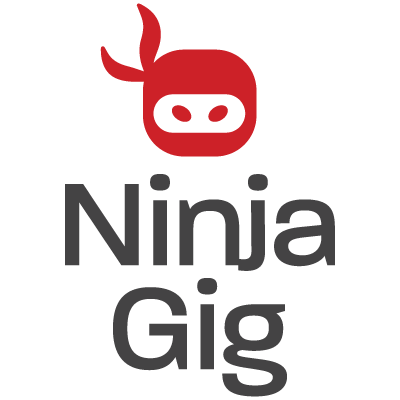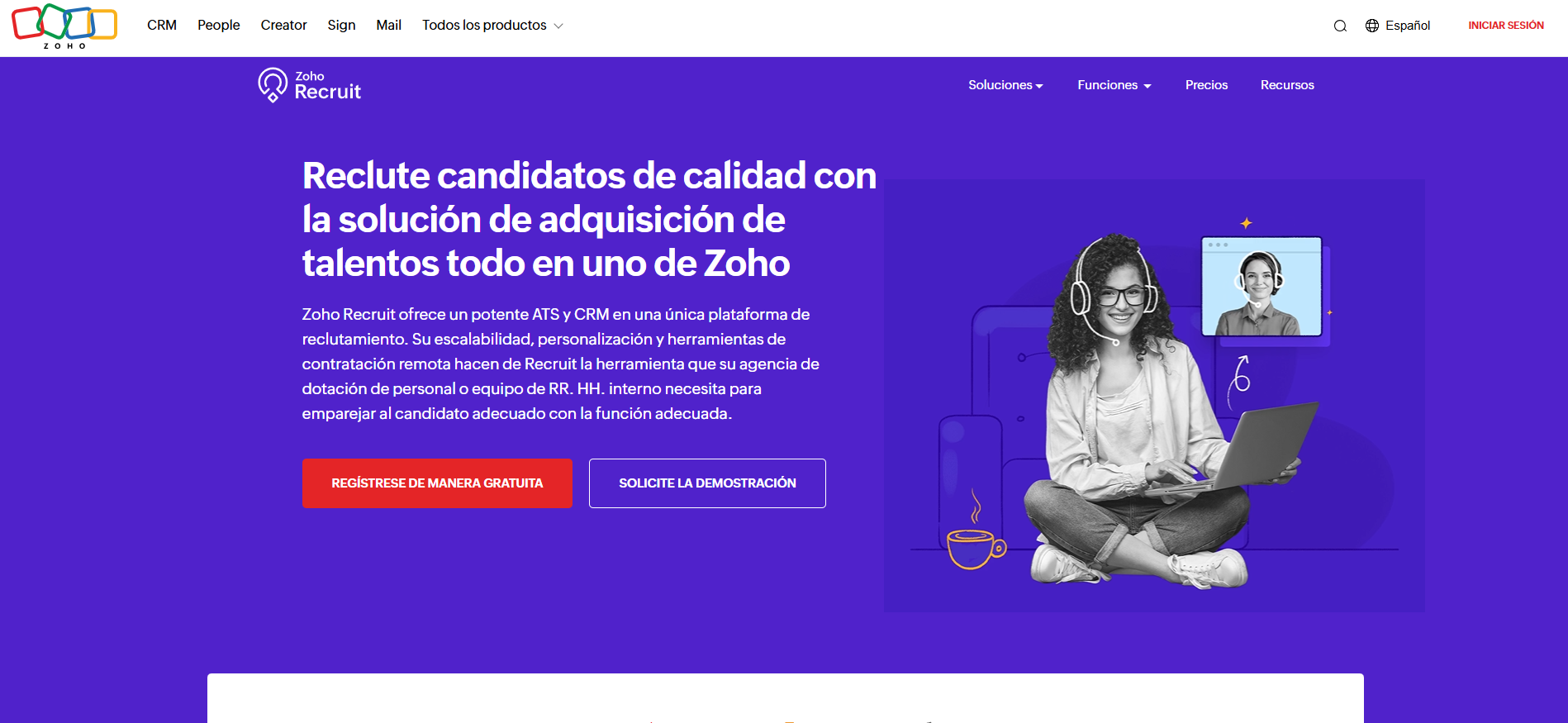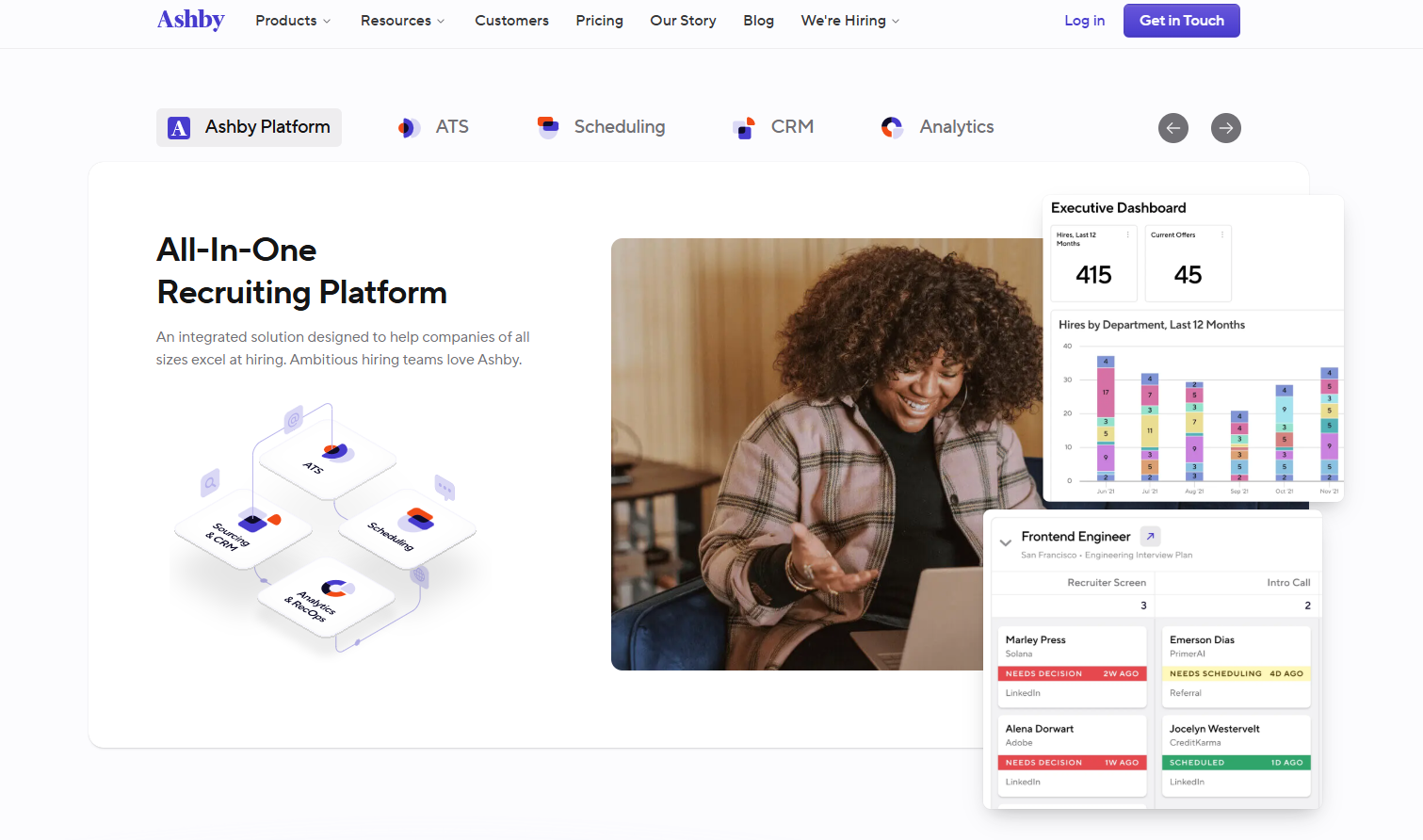What Is an ATS, and Why Use One
An applicant tracking system is a tool for managing job vacancies and applications, but it can serve more than this basic need. As a small or growing business, we understand that finding the right systems for your organization can be challenging and expensive. This is why we recommend exploring the use of an ATS for general HR functions beyond recruitment as part of your toolkit.
Without an ATS, your teams may need to spend additional time manually sifting through resumes, making calls to candidates to set up interviews, or responding to unsuitable candidates.
You can use an ATS as a central repository to track candidate information, important forms, and notes about individuals.
ATSs can help you execute multiple functions like the following:
- Help promote your brand by sharing information about your company and its benefits, highlighting why people should consider working there.
- Reduce the overhead of managing job listings individually and manually
- Help manage processes and provide a central repository for documentation
- Manage the administrative burden of shortlisting hundreds of applicants
- Some ATSs can help auto-respond to candidates
- Automated HR reporting, insights, and trend tracking
What to Look For in an ATS
Not all ATSs are the same, so make sure you choose an ATS with the core functionality you’re looking for.
We’ve spent a considerable amount of time creating an ATS that is easy to use and user-friendly—a critical success factor to look out for with all systems.
These are some of the key features we recommend looking for, particularly for smaller organizations that require simpler tools.
Ease of use and short learning curve:
![]() As a small business, you need to ensure that you are not spending hours setting up, configuring, and customizing a system that needs to be simple.
As a small business, you need to ensure that you are not spending hours setting up, configuring, and customizing a system that needs to be simple.
You shouldn’t need to spend hours upskilling when training new joiners or getting to grips with a new platform. It should be intuitive and user-friendly, so you can post jobs within minutes of signing up.
Functionality to filter applications:
As a recruiter myself in a previous life, I cringe at the thought of manually having to go through every resume! Strategically using filters can save hours when it comes to shortlisting from a large number of applications.
ATSs have come a long way in the last few years, and you must ensure you’re looking for ways to make your life easier.
Using well-structured application questions that eliminate unsuitable candidates is key. I love any systems that surface top picks for me without requiring me to sift through hundreds of applications.
Automation features:
I specifically look for platforms with built-in features that enable customizable and automated candidate screening, application management, and communication.
The bulk of time spent on activities like these makes it essential to find ways to reduce time spent and ensure you’re still responding to candidates from within the platform. I like tools (like those listed below) that enable you to set up workflows and communication templates.
Here Are Our Top Recommendations for Small Businesses
We obviously love Ninja Gig, and we’ve created our platform with a user-first approach. However, different small businesses will have unique needs, and different ATSs will cater to different needs.
As one of the leading experts in this space, we’ve curated a list of great ATSs out there we’d recommend looking into.
1. Zoho Recruit
Zoho Recruit’s platform is straightforward and easy to use, offering a great range of customization options, making it an excellent choice for small businesses with unique requirements. They have added new features, such as a client portal and video interviews, but these come at additional costs.
You can utilize add-on apps like Zoho Sales for marketing or their finance app, Zoho Books, making it possible to scale within Zoho’s ecosystem.
However, I have found that Zoho has limited branding options on their lower-tiered plans, which can decrease your visibility when advertising. Zoho also tends to have limitations when it comes to integrating with platforms outside of Zoho’s environment, so if you need to integrate with existing systems, you may need to look at alternative platforms.
Pricing: A Free option is available with limited functionalities. The paid plans start at $25 per user per month.
Overall:
While Zoho offers great features through its ecosystem, brands seeking simplicity without the need for additional modules may prefer more all-in-one solutions.
2. Greenhouse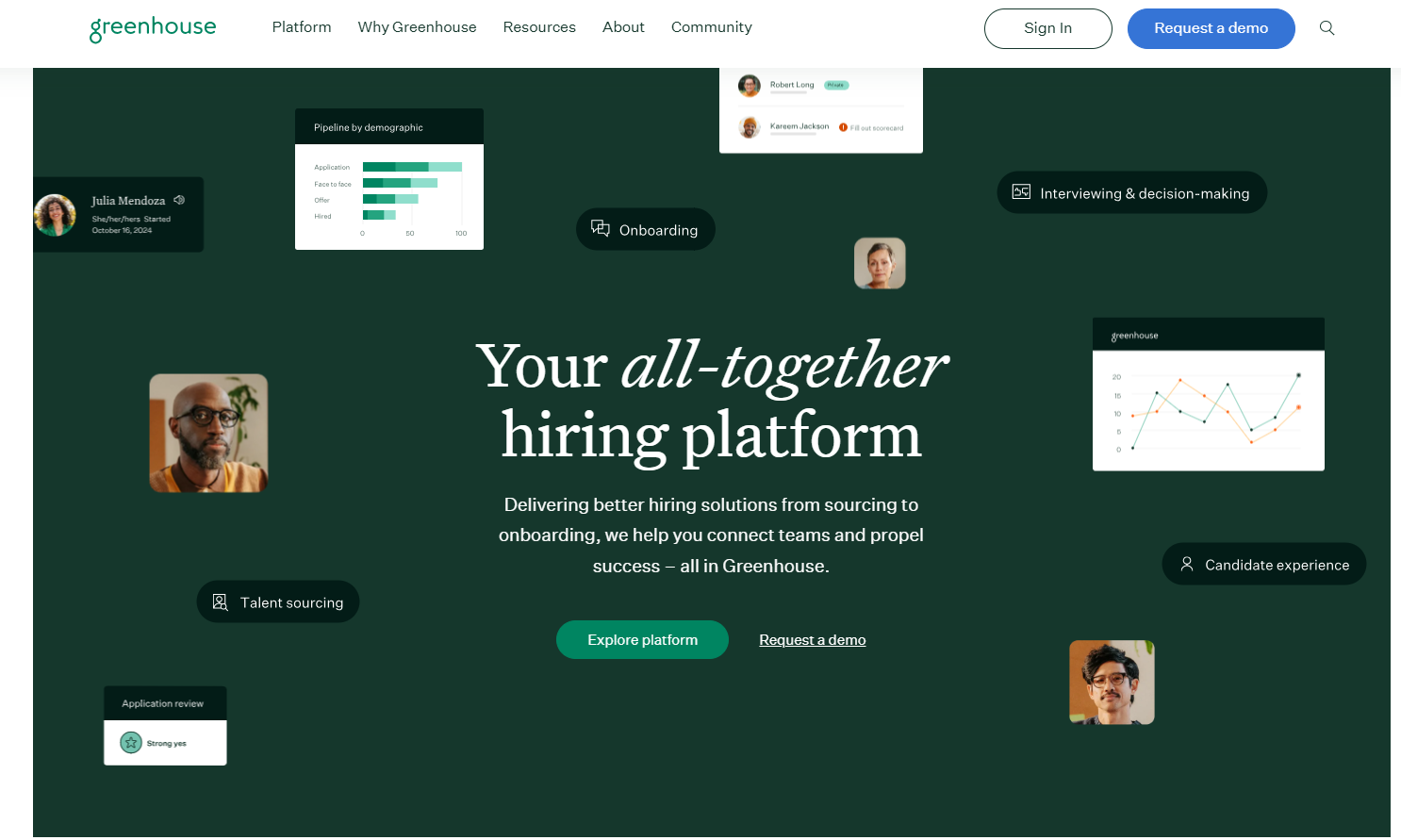
Greenhouse is easy to set up, customizable, and has many features. I know they’re technically a better fit for larger organizations, but small businesses need to consider additional comprehensive platforms that can scale as their companies do. Greenhouse is one of those tools I’d consider looking at for this reason.
That said, there are so many upsides to Greenhouse, but you will need to pay more for the more advanced features like reporting and analytics.
The downside is that the integration with Indeed has its quirks, so as someone who relies on seamless job posting, I found this a significant hurdle. Greenhouse might be overly complex for businesses with straightforward hiring needs or low hiring rates.
Pricing: Pricing plans are available upon request, starting at approximately $6,500 per year for companies with 1-10 employees.
Overall:
While on the pricier side, Greenhouse is a feature-rich platform that would be a good fit for smaller companies that need more in-depth ATS capabilities, analytics and extensive features than smaller ATSs offer.
3. Ashby ATS:
Although it’s one of the newer kids on the block, I think Ashby will quickly become one of the more popular ATSs.
I really like Ashby; it’s intuitive, and they have a comprehensive service offering at their price. In addition to their impressive features, such as powerful automation, analytics, and dashboards, their customer support is truly exceptional. As a great value-add, they have automated scheduling, including calendar integrations. From a candidate experience point of view, it’s one of the few that really stand out.
There are a few downsides to Ashby that I’m hoping will be ironed out as they grow. They don’t yet allow scorecards, making it hard to extract this information. It’s also hard to search on the platform as the built-in search filters are not user-friendly.
The baseline cost is really reasonable, considering all of their features. However, it’s likely to become unaffordable for scaling businesses as they charge for each additional user seat.
Pricing: Their pricing starts at $300 per month for companies with 1-10 employees. They offer a discounted rate for annual commitments and custom pricing plans for companies larger than 100 employees.
Overall:
Ashby is a great platform overall for SMB’s, especially those who value automation. If you’re a cost-conscious organization, you’ll need to carefully consider pricing as your business grows.
4. Workable: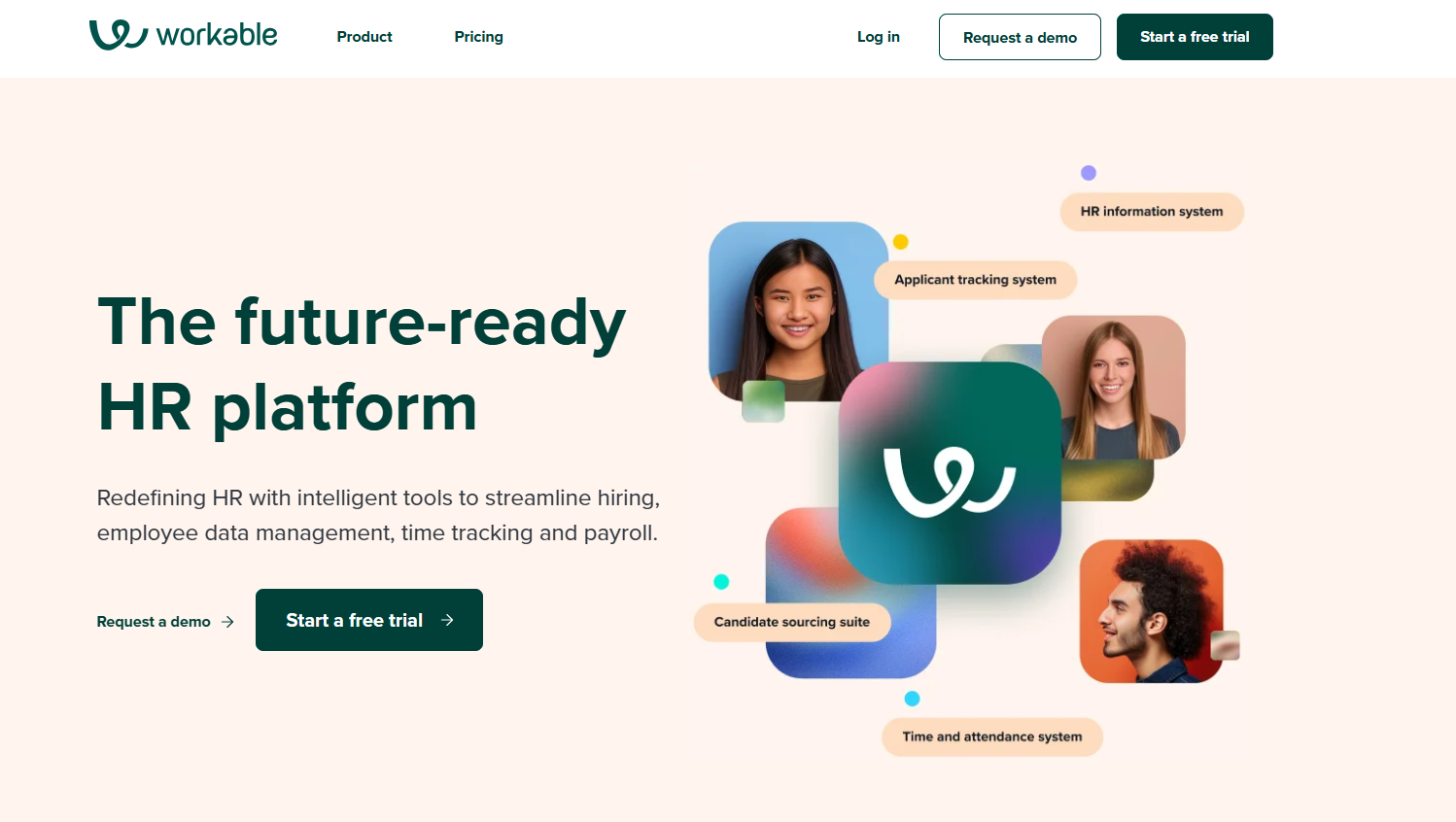
Smaller businesses need an ATS like Workable that can be set up quickly and doesn’t require a lengthy onboarding process. They have extensive integration capabilities with over 200 job boards, which I found impressive!
Workable also boasts some standout features, including multi-language capabilities that enable you to translate job posts, applications, and more into six languages. This is ideal for smaller companies with a global presence that need to utilize tools that can save time. Workable also helps save time when screening candidates by making use of AI tools that provide candidate profile match scores and candidate profile summaries.
Unfortunately, the paid-for plans on lower tiers are pretty limited, as are the customization options. The customer service response time could also be better.
Pricing: $249 per month for businesses with 1 – 20 employees.
Overall:
My view is that Workable is a solid choice for smaller businesses that need an ATS with broad job board integrations. I love that they have built in AI-assisted screening, and multi-language support may make this a better option for global (and lean) teams.
5. BambooHR
 BambooHR is an excellent option if you’re looking for a more comprehensive tool that offers additional functionalities, such as payroll, performance management, and HR Management. As a smaller company, this is a good option if you need a combined system for HR and recruitment instead of using it as a standalone ATS.
BambooHR is an excellent option if you’re looking for a more comprehensive tool that offers additional functionalities, such as payroll, performance management, and HR Management. As a smaller company, this is a good option if you need a combined system for HR and recruitment instead of using it as a standalone ATS.
I like that they don’t require long-term contracts and offer reasonable costs for monthly plans. While it’s not a super advanced ATS, they have a really user-friendly platform that still provides excellent templates, including customizable email templates and offer letters.
You can also keep track of shared notes and use this as a central repository for feedback, making it easy to collaborate with stakeholders and team members. They also have an excellent app for both Android and iOS.
However, BambooHR has limited job board integrations compared to some of the other ATSs, which I found surprising. I also found the reporting and analytics to be quite limited, so it may be a blocker if you need in-depth analysis.
Pricing: The pricing plans are only available upon request and are customized depending on your organization’s requirements. You can expect to pay approximately $6 per employee per month for the basic plan, based on a rough estimate.
Overall:
Some platforms aren’t as comprehensive as BambooHR. I’d recommend this for organizations that need a more full-scale HR Management platform that expands outside the realm of only applicant tracking and job advertising.
6. Ninja Gig
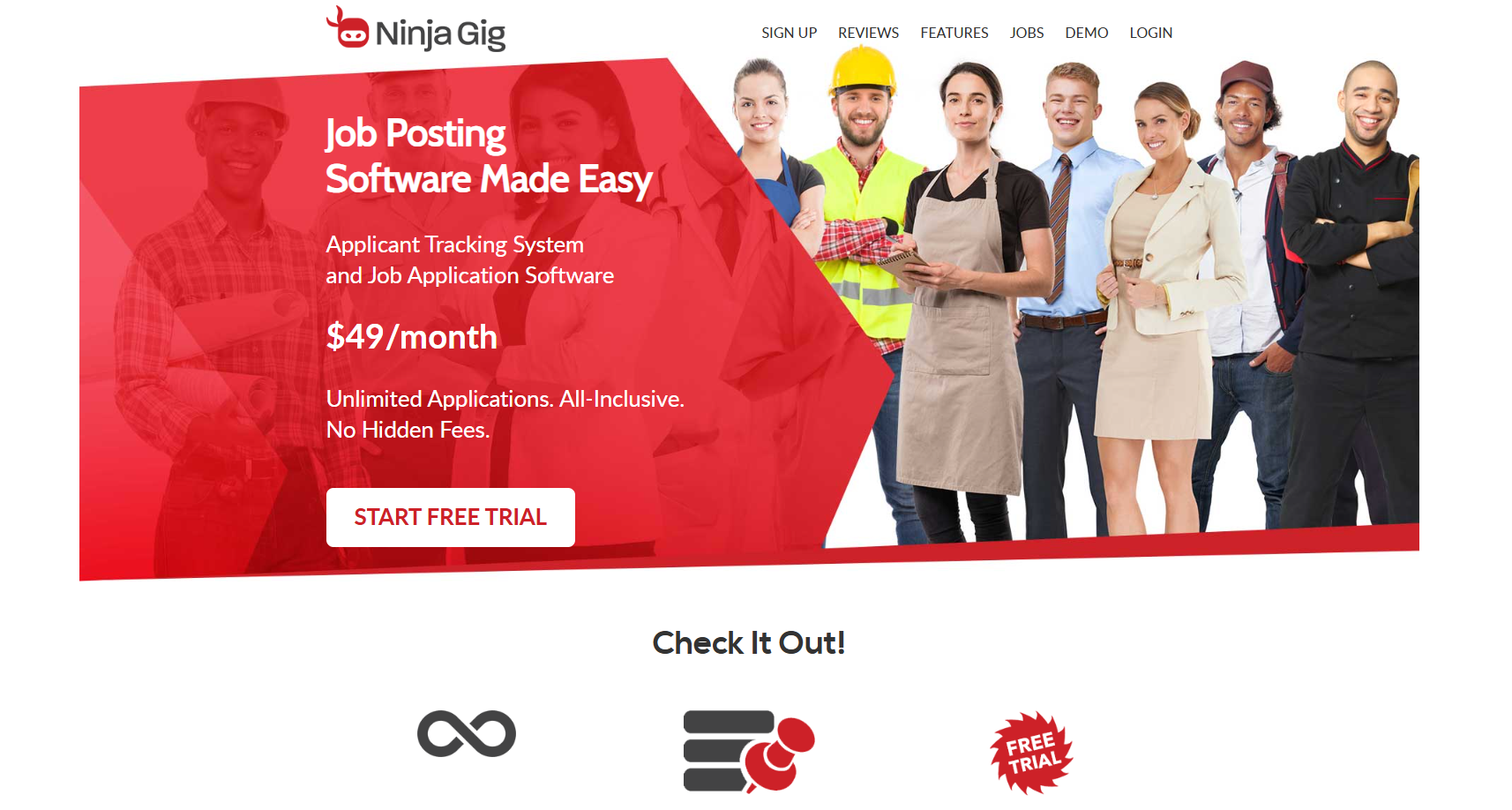 Of course, I love our ATS, and we’ve spent years of expertise and effort creating a solid, user-friendly ATS that is simpler to set up than other platforms we’ve tested.
Of course, I love our ATS, and we’ve spent years of expertise and effort creating a solid, user-friendly ATS that is simpler to set up than other platforms we’ve tested.
It’s built for small companies, startups, and agencies due to its ease of use and wide range of functionalities at an excellent price point.
You can easily create jobs and application questions and post them on multiple popular job boards like Indeed, Google Jobs, and more with ease. We know that having the ability to develop customized application questions can save a lot of time when needing application sets for specific job roles or generic knock-out questions based on things like qualifications or work eligibility.
We’re always striving for ways to improve. However, our current reporting tool is geared toward those who want the basics streamlined, so if you need advanced analytics and dashboards, you may have to use other tools or make use of our export feature.
Pricing: We offer a 14-day free trial, which I highly recommend checking out.
Thereafter, Ninja Gig only costs $49 per month, including unlimited job postings and no hidden fees, making this one of the best-priced ATSs available.
In summary:
Overall, each of these ATS platforms has its unique strengths and drawbacks, and you will need to decide on what core functionalities are essential to your business. If pricing is a significant factor, consider one of the more cost-effective platforms mentioned above, as they are all excellent options.
User adoption and ease of use are critical, so we recommend trying out those that offer free trials and ensuring all users feel comfortable using the platform!
You also need to factor in the growth potential of your organization and ensure that your chosen ATS can scale as your business needs or recruitment requirements grow, without requiring you to explore other platforms.
